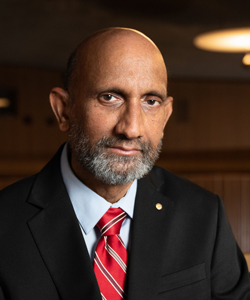
For a community that loves its smartphones and obligingly updates the operating system when we are advised a few times each year, why are we prepared to live with an operating system for our research that hasn’t been updated in 30 years?
Good intentions, just-in-time measures, ad-hoc interventions, politics and overlapping state and Commonwealth priorities have led to a system spread over 176 programs and 14 federal portfolios.
We are left with an incoherent system band-aided to slow the bleeding but not to fix the problem.
The lack of a coherent and strategic approach yields a research funding model that is broken.
Universities, which perform 87% of discovery or basic research in Australia, rely heavily on international student fee revenues to fund research or to meet the indirect costs which hard-to-win research grants rarely cover.
Politicians talk regularly about mitigating sovereign risk yet watch Australia’s research capacity be increasingly dependent on highly contested international student markets, and vulnerable to geopolitical issues.
We expect a lot from Australian researchers. They are not only asked to advance the frontiers of knowledge but to train the next generation, inspire the public, commercialise their research, protect national security, and solve global challenges.
Yet, many of these tasks are not supported by the current system and are not captured by the metrics used to assess performance.
A poorly functioning Australian science and research system has wide-ranging impacts. Australia’s productivity growth is declining – in the decade to 2020, Australia’s productivity growth was the slowest in 20 years, and our investment in R&D declined to a new low point over the same period.
We know R&D can increase the number of industries Australia benefits from, thereby raising economic complexity and making our economy less vulnerable. As government investment in R&D falls, the incentive for business investment falls with it.
The Prime Minister has personally acknowledged that science is essential to future economic growth and could unlock our potential as a country.
But acknowledging the importance of science is one thing. Investing in science is another. And right now, it is clear there is a mismatch between Australia’s aspirations and its support for science.
The Australian Government must urgently commission a cross-portfolio, cross sectorial review of the Australian research and development (R&D) system. This review would inform a 10-year roadmap to enable R&D to power our economy and meet our national ambitions.
Reversing the downward trend of government investment in R&D is not the work of any single budget. All levels of government, industry, universities, the research sector, and philanthropy must play their part.
But a national strategy, a roadmap and a decade of commitment to boost investment in R&D is an essential start.
Read the .
Professor Chennupati Jagadish AC PresAA FREng FTSE
President, Australian Academy of Science
This piece was first published in .







